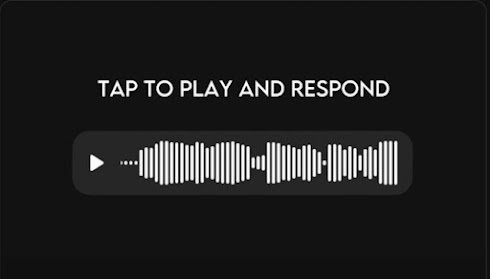Sent You a Friend Request, Tap to Open: Exploring the Social and Psychological Dynamics of Digital Connection
In today’s digital world, social media platforms have transformed the way we connect with others. From Facebook to Instagram to LinkedIn, each platform provides a way for people to build and nurture relationships. One of the most common actions in digital interactions is sending or receiving a friend request. The phrase “Sent you a friend request, tap to open” has become ubiquitous, especially on platforms like Facebook, where it serves as both an invitation and a prompt to engage. But what does it really mean when someone sends you a friend request? How does this digital gesture affect social interactions, and what are the psychological dynamics behind it?
In this article, we will delve into the significance of the phrase “Sent you a friend request, tap to open,” exploring its social, psychological, and technological implications. We’ll examine why friend requests are central to online interaction, how they influence online relationships, and why responding to them matters in the digital age.
The Evolution of Online Connections
Before the rise of social media, building and maintaining relationships was largely dependent on face-to-face interactions, phone calls, and written communication. However, with the advent of platforms like Facebook, LinkedIn, and Instagram, the traditional methods of connection have been replaced by digital invitations, or friend requests, which make it easier for people to expand their networks with just a few clicks.
Facebook, which launched in 2004, was one of the first platforms to popularize the concept of friend requests, where users could send a request to someone they wanted to add as a “friend” on the platform. Once the recipient accepted, they could share posts, photos, and status updates with each other. This seemingly simple interaction laid the groundwork for how we now engage with others online. The phrase “Tap to open” acts as a prompt for the user to engage with this online invitation, indicating a call to action for potential social connections.
The Role of Friend Requests in Digital Communication
Friend requests serve as a fundamental mechanism for interaction on social media platforms. They are invitations to form digital relationships, which can be casual, professional, or even romantic in nature. Unlike in-person interactions, where body language and tone play a significant role, online friend requests have no immediate context, making them less personal but still meaningful.
Friend requests can be categorized into different types based on the platform and the relationship between the sender and recipient:
- Social Requests: These are common on platforms like Facebook or Instagram, where users send requests to friends, acquaintances, or people they share interests with. This could include family members, classmates, or work colleagues.
- Professional Requests: On platforms like LinkedIn, friend requests are often used to connect with colleagues, potential employers, or business partners. These types of connections are more formal and can lead to career opportunities or professional networking.
- Interest-Based Requests: Sometimes, people send friend requests based on shared interests, such as mutual hobbies, causes, or online communities. This type of connection is common on platforms like Reddit or Facebook groups.
The phrase “Tap to open” serves as an invitation to engage with these various types of digital connections. It’s a reminder to take action, either by accepting, declining, or ignoring the request.
The Psychology of Sending a Friend Request
When someone sends a friend request, it’s typically motivated by a desire to connect, whether for personal or professional reasons. Understanding the psychology behind this action can help us better grasp the significance of friend requests in the context of online relationships.
Seeking Validation and Belonging
One of the primary psychological drivers behind sending a friend request is the need for validation and belonging. In the digital world, where social media often acts as a reflection of one’s social life, receiving friend requests can provide a sense of recognition and social status. Accepting a request can boost self-esteem, as it signifies that others value your presence and are interested in connecting.
For instance, a Facebook user may send a friend request to someone they admire or want to get to know better. By sending the request, they hope to initiate a connection, which could lead to increased social validation. The phrase “Tap to open” is a gentle nudge for the recipient to act, either validating or rejecting that desire for connection.
Expanding One’s Social Circle
In the digital age, expanding one’s social circle is no longer restricted to physical proximity. A friend request can be an opportunity to expand one’s network and form relationships that might not have otherwise happened. For example, a professional may send a LinkedIn friend request to someone in their industry with the hope of forming a business partnership or learning from their experience. Similarly, someone who shares common interests might send a Facebook friend request to an individual they admire, hoping to engage in a meaningful conversation.
The act of sending a friend request represents a proactive approach to building and growing one’s social or professional network. The phrase “Tap to open” encourages the recipient to take action and potentially form new connections that could lead to collaboration, learning, or friendship.
Overcoming Social Barriers
Friend requests also allow people to overcome social barriers that may exist in traditional face-to-face interactions. For example, someone may feel shy or socially anxious and hesitant to initiate a conversation in person, but sending a friend request online feels less intimidating. By simply sending a request, they take the first step in connecting with someone without the fear of immediate rejection or social judgment.
In this sense, the “Tap to open” prompt is particularly powerful, as it removes some of the emotional pressure associated with in-person interactions. By simply acknowledging the friend request, the recipient has the option to accept or decline without the social discomfort of a face-to-face encounter.
The Etiquette of Friend Requests
As with any form of social interaction, responding to a friend request requires a certain level of etiquette. Whether you’re sending or receiving a friend request, it’s important to approach the situation with respect and consideration for the other person’s feelings and boundaries.
Accepting a Friend Request
When someone sends you a friend request, accepting it is a way of signaling that you are open to forming or maintaining a connection. If the request is from a family member, colleague, or long-lost friend, accepting it can strengthen your bond with that person. It allows both parties to share updates, photos, and posts with each other, creating a digital space for continued interaction.
However, when deciding whether to accept a friend request, it’s important to consider your level of comfort with the other person. If you don’t know the person well or feel uncomfortable connecting with them, it’s okay to decline or ignore the request. In the case of professional platforms like LinkedIn, accepting a request may be seen as an acknowledgment of mutual interest, whether it’s for business opportunities, collaboration, or networking.
Declining a Friend Request
Declining a friend request can be a delicate process. While rejecting a request isn’t inherently rude, it can signal that you don’t wish to form a connection with that person at this time. There may be a variety of reasons for declining a request, such as not knowing the individual personally, preferring to keep your social media circles limited, or simply not feeling comfortable connecting with them.
When rejecting a friend request, it’s important to remember that the action is not a reflection of the person’s worth but rather a personal decision based on your own preferences and boundaries. Social media platforms like Facebook provide users with the option to ignore a request, which allows them to avoid making an immediate decision while still keeping the invitation open for future consideration.
Ignoring a Friend Request
Sometimes, the most neutral approach is to ignore a friend request altogether. This can happen when you don’t feel strongly about either accepting or declining the request, or when you need more time to decide whether you want to connect with the individual. Ignoring the request provides a temporary solution while giving you the time to reflect on the potential relationship.
The “Tap to open” message encourages the recipient to take action, whether it’s accepting, declining, or ignoring the request. However, it’s important to be mindful that leaving a request unanswered for too long may lead to misunderstandings or confusion, particularly if the sender is someone you know personally.
The Impact of Friend Requests on Social Media Relationships
In the digital age, online friendships can be just as meaningful as those formed in person. Friend requests play a pivotal role in shaping the dynamics of these relationships. By accepting a request, you open the door to more frequent interactions, such as sharing photos, posts, and comments. These interactions foster a sense of connection and engagement, allowing you to maintain relationships over long distances.
However, it’s also important to note that not every friend request results in a deep or meaningful connection. For some, accepting a request simply increases their number of “friends” or followers without fostering any substantial relationship. In this sense, friend requests can sometimes feel transactional rather than genuine.
The phrase “Tap to open” is a subtle reminder that each digital connection has the potential to lead to something more. Whether it’s a casual acquaintance or a lifelong friend, responding to friend requests allows you to navigate the landscape of online relationships and build the connections that matter most.
Friend Requests and Online Reputation
In some cases, sending and responding to friend requests can have an impact on your online reputation. For example, accepting a request from a colleague or employer on LinkedIn can signal that you are open to professional opportunities, collaboration, and networking. On the other hand, declining a request from a potential business partner may give the impression that you are unapproachable or closed off to new connections.
In personal social media networks like Facebook or Instagram, friend requests may influence how others perceive your social interactions. Accepting or rejecting requests from certain individuals can affect how your network views you, and it may have an impact on future interactions both online and offline.
Conclusion
In today’s world, the phrase “Sent you a friend request, tap to open” encapsulates a simple but profound act of digital connection. Friend requests are the digital equivalent of offering a handshake or an invitation to join a conversation. Whether for social, professional, or personal reasons, responding to a friend request is an important decision that reflects our desire to connect with others.
By understanding the social and psychological dynamics behind friend requests, we can better navigate the complexities of online relationships and the etiquette of digital communication. Ultimately, tapping to open a friend request is more than just a simple action; it’s a gateway to new connections, meaningful conversations, and a stronger online network.







